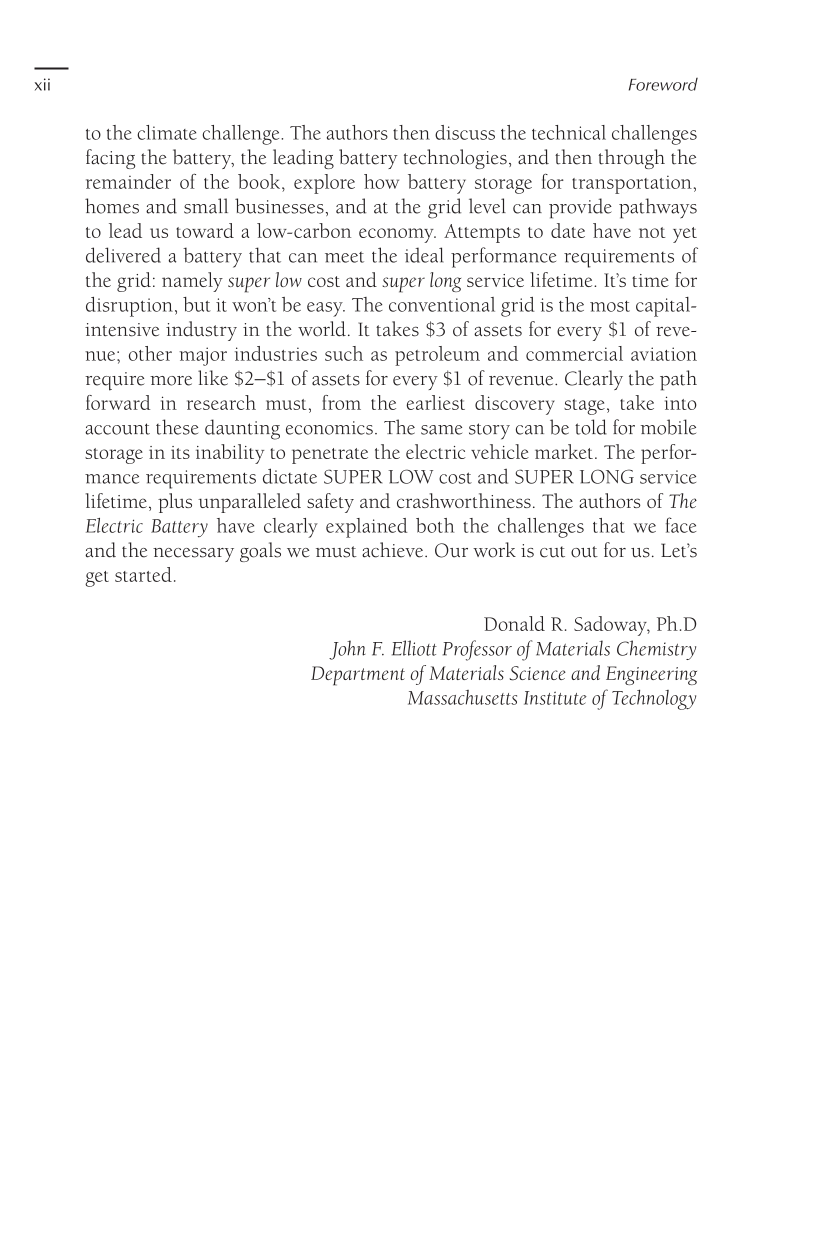xii Foreword
to the climate challenge. The authors then discuss the technical challenges
facing the battery, the leading battery technologies, and then through the
remainder of the book, explore how battery storage for transportation,
homes and small businesses, and at the grid level can provide pathways
to lead us toward a low-carbon economy. Attempts to date have not yet
delivered a battery that can meet the ideal performance requirements of
the grid: namely super low cost and super long service lifetime. It’s time for
disruption, but it won’t be easy. The conventional grid is the most capital-
intensive industry in the world. It takes $3 of assets for every $1 of reve-
nue; other major industries such as petroleum and commercial aviation
require more like $2−$1 of assets for every $1 of revenue. Clearly the path
forward in research must, from the earliest discovery stage, take into
account these daunting economics. The same story can be told for mobile
storage in its inability to penetrate the electric vehicle market. The perfor
mance requirements dictate SUPER LOW cost and SUPER LONG service
lifetime, plus unparalleled safety and crashworthiness. The authors of The
Electric Battery have clearly explained both the challenges that we face
and the necessary goals we must achieve. Our work is cut out for us. Let’s
get started.
Donald R. Sadoway, Ph.D
John F. Elliott Professor of Materials Chemistry
Department of Materials Science and Engineering
Mas sa chusetts Institute of Technology








































































































































































































































